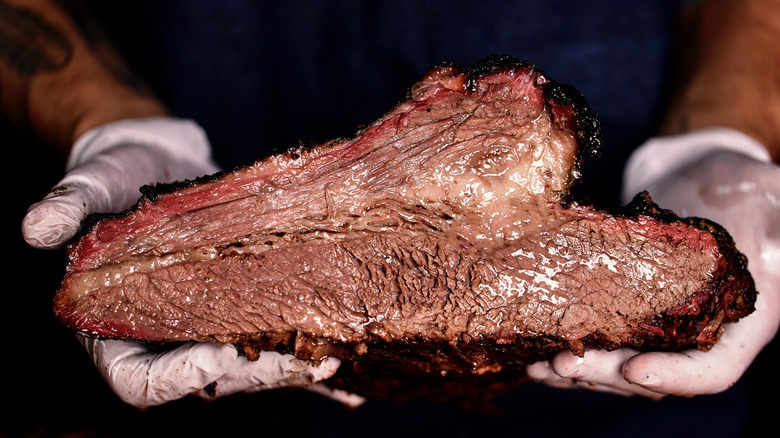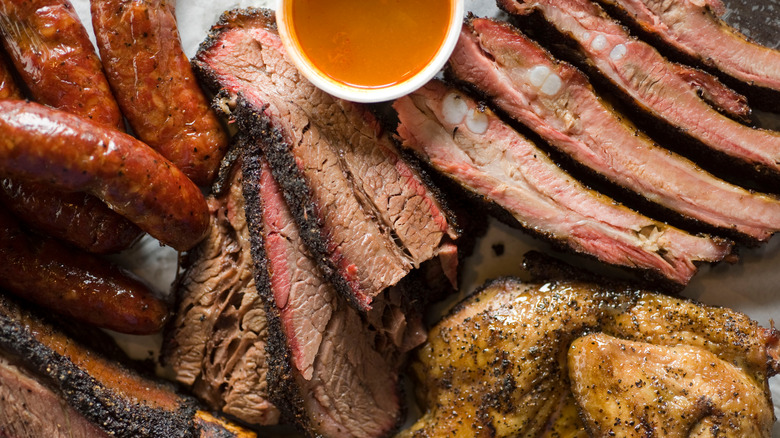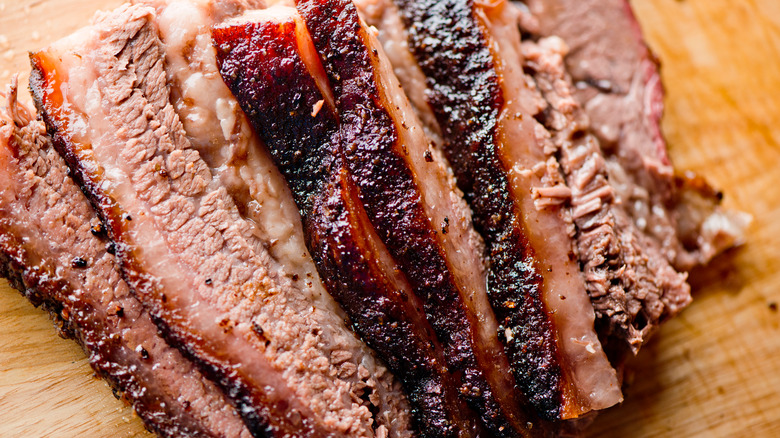The Reason Texas' BBQ Traditions Are So Diverse
Who doesn't love a good barbecue? And we're not talking about a simple backyard cookout featuring burgers and dogs, but rather the method of barbecue, which is really a combination of grilling and smoking meat inside a closed cooker loaded with live coals (via Culture Trip). The process of barbecuing is low and slow, typically used to cook large cuts of meat or even whole animals, and is popular all over the United States and the world (via Matador Network).
In the U.S., regional barbecue is a wide and varied tradition, encompassing whole hog BBQ in the Carolinas to white BBQ-sauced pork and chicken in Alabama and so, so much more (via Thrillist). One state even includes a whole variety of barbecue styles within its borders, and that's Texas. From the type of wood used to the question of sauce vs. rub to the temperature of the smoker, Texas BBQ varies regionally across the state.
Regional variations were established by immigrant groups
Like so many of the great cooking traditions in the United States, Texas barbecue styles were heavily influenced by immigrants that settled in the state over the course of its history. As explained by Culture Trip, varying groups including Germans and Czechs, Mexicans, and African Americans established communities throughout Texas, bringing their cooking methods with them. In the 1840s, for example, a huge wave of German immigration arrived in Central Texas, where Germans familiar with butchery set up meat shops, often smoking and selling the leftover cuts (via Culture Trip). Over time, this tradition evolved into more straightforward BBQ joints, and today, Central Texas barbecue is defined by the use of oak and pecan wood burned at low temperatures, as well as the use of a seasoned rub all over the meat.
South Texas is known for its excellent barbacoa, barbecued seasoned beef that's sold alongside stacks of tortillas (via Homesick Texan). As noted by Culture Trip, this style of BBQ can be traced to Mexican farm hands working along the border, whose native tradition of barbacoa involved wrapping a cow's head in maguey leaves and placing it in a pit with hot coals for several hours.
More regional styles
As explained by Culture Trip, the wide variety of barbecue styles found across the state of Texas was heavily influenced by the various groups of immigrants that settled there over the years. In East Texas, for example, the saucy, chopped style of barbecue is owed to African Americans who settled there following the end of the Civil War. And the West Texas barbecue that is referred to as "cowboy barbecue" because it is cooked over an open fire dates back to the days of cattle drives and trailblazing in the state, which was most active from 1865 through the 1890s (via Texas Parks & Wildlife).
So as you can see, Texas is quite varied in its barbecue styles. But one commonality is important to note: The use of beef in all these applications (via Culture Trip). As Texas is well known for its cattle ranching industries (via BackyardBoss), it's only natural that the local meat would be put to good use feeding Texans — and visitors — delicious, delicious brisket, ribs, and more (via Houston Chronicle).


